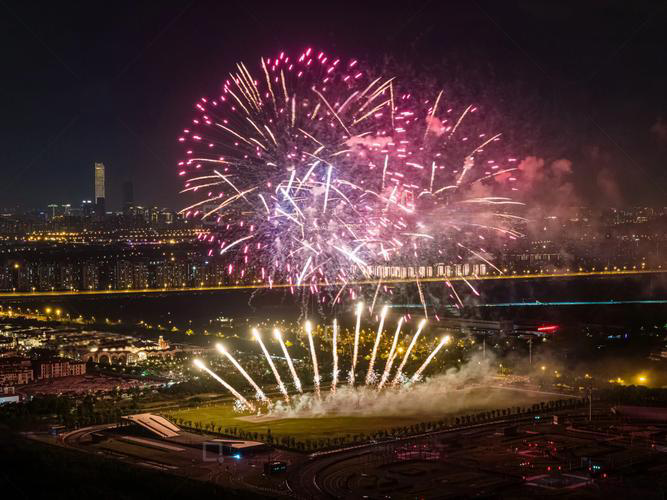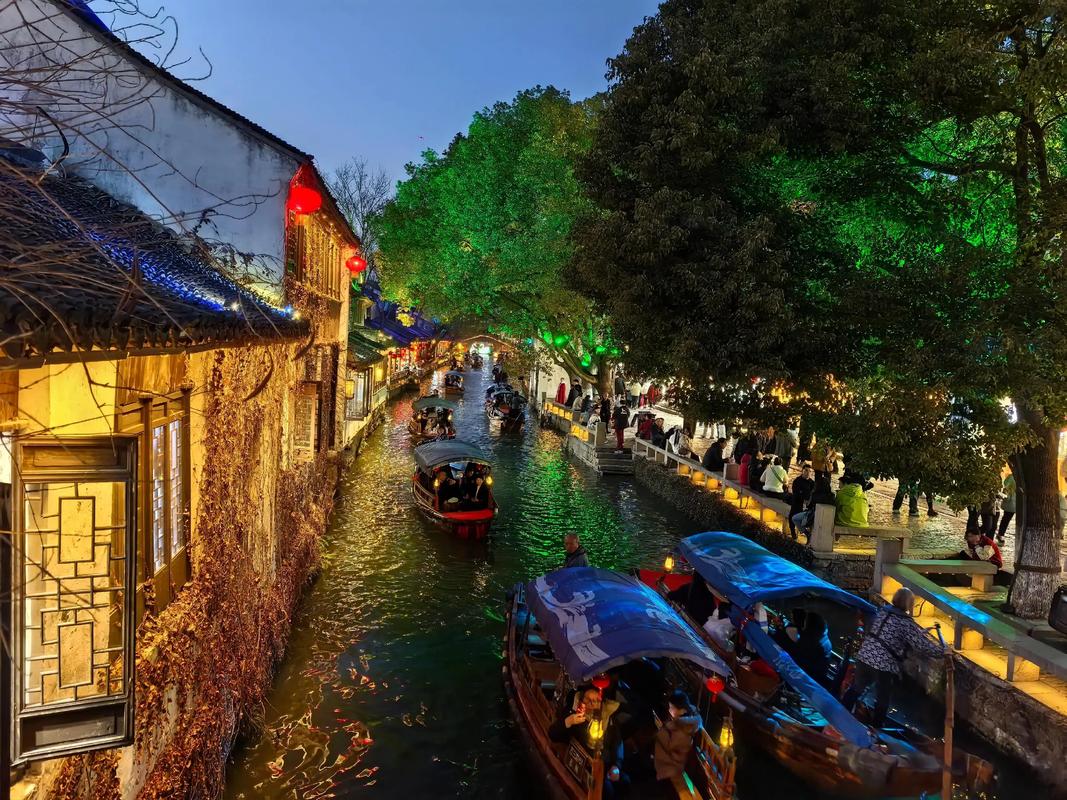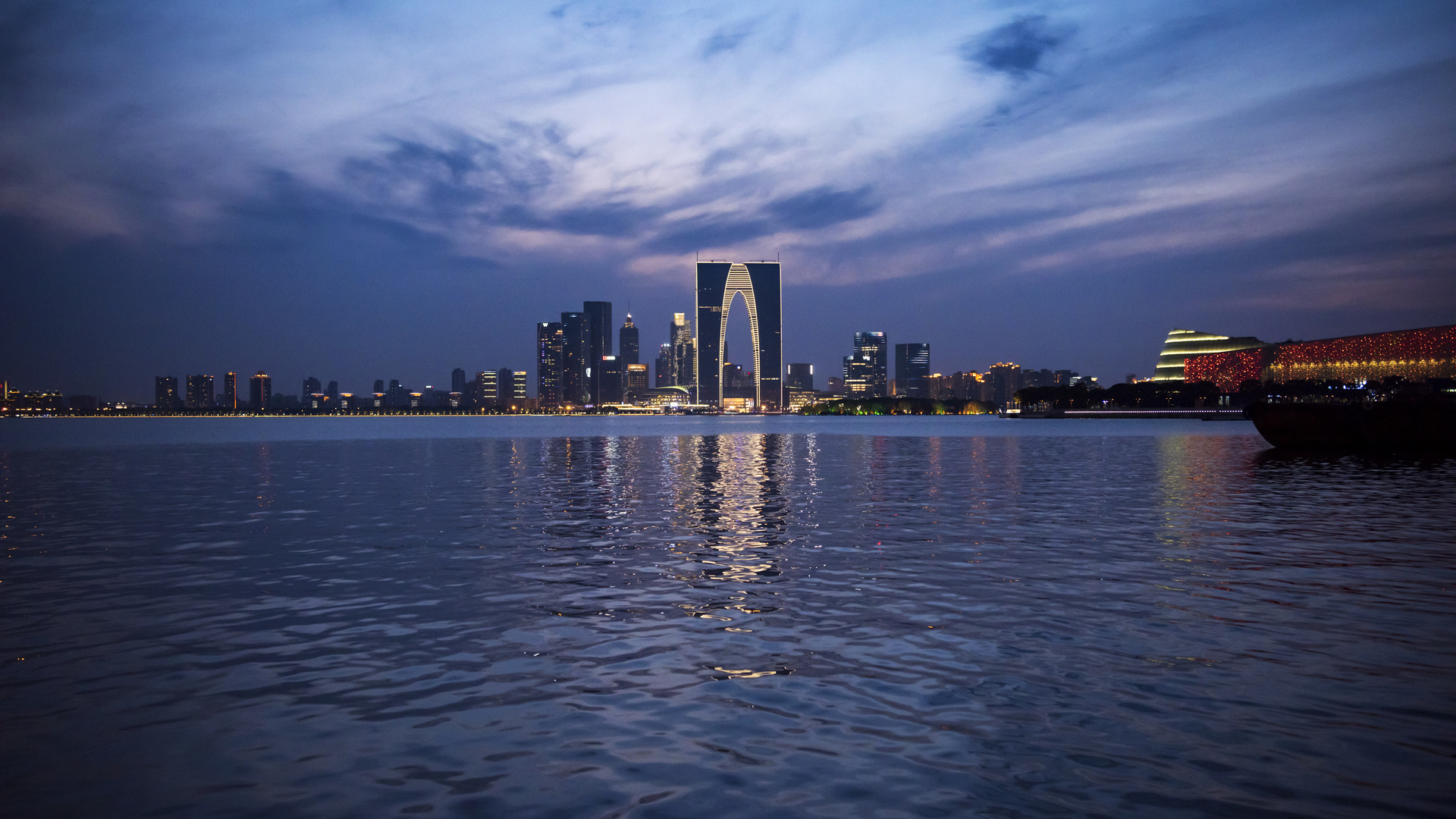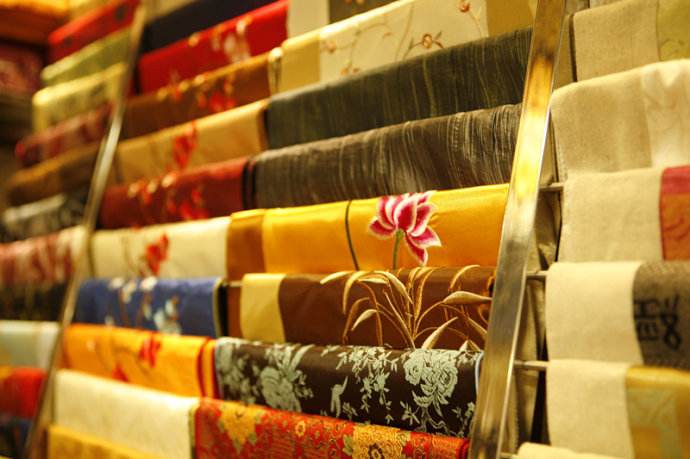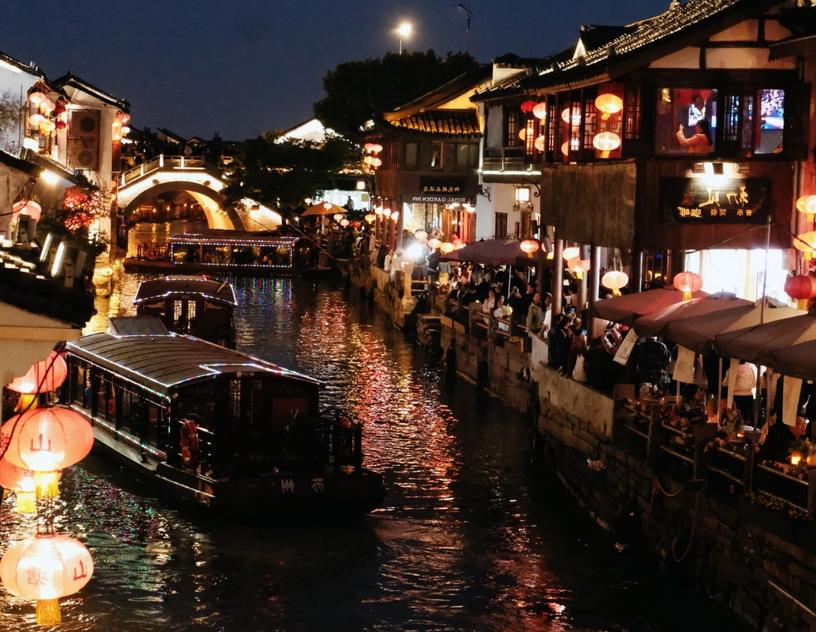✨ Summary
Beside the shimmering waters of Jinji Lake rises Suzhou Industrial Park (SIP)—a place where tech campuses, waterfront parks, and clean, modern streets offer a glimpse of China’s urban future. Built through China-Singapore cooperation, SIP has grown in just 30 years from farmland into one of China’s most innovative and livable districts.
This is Suzhou’s modern identity: smart, green, international, and still full of gentle Suzhou charm.
A Modern City with a Global Backstory
Suzhou Industrial Park began in 1994 as a joint project between China and Singapore. Inspired by Singapore’s urban planning and management, the district was designed from day one to be clean, efficient, and future-oriented.
Today, SIP is home to Fortune 500 companies, research institutes, and vibrant startup hubs—yet still features tree-lined boulevards, lakeside promenades, and quiet public spaces perfect for morning jogs or evening strolls.
What makes it special
- Thoughtful urban planning
- Clean, orderly neighborhoods
- Clear international influence
- A balanced, livable rhythm uncommon in fast-growing Chinese cities
Where Tradition Meets the Future
Suzhou is known worldwide for its classical gardens and canal towns—but SIP represents the city’s next chapter. Here, cutting-edge tech coexists with Suzhou’s refined lifestyle.
You’ll notice:
- Classical elegance in museum architecture, cultural centers, and lakeside landscapes
- Smart-city convenience in transport, healthcare, public services, and daily living
- A calm pace compared to larger metropolises—still unmistakably Suzhou
This blend of old beauty + new energy is what makes SIP feel unique, even among China’s modern districts.
Green & Smart Living Around Jinji Lake
Visitors often describe SIP as “the cleanest, calmest modern district in China.”
The district is a showcase for sustainable urban design:
- Green buildings and eco-friendly communities
- Solar and smart-grid energy projects
- Extensive bike lanes and public parks
- Clear water, fresh air, and beautiful walking routes
Traveler tip:
Walk or cycle the Jinji Lake Scenic Trail—sunset views here rival any waterfront city.
Innovation Hubs Worth Exploring
Even if you’re not a tech insider, SIP’s innovation atmosphere is part of the experience.
You’ll find:
- Tech campuses from major Chinese companies
- AI and robotics labs
- Startup incubators and maker spaces
- Modern cafés filled with young engineers and entrepreneurs
It’s a great place to feel the pulse of China’s new-generation industries—from biomedicine to artificial intelligence.
A Glimpse into China’s Urban Future
SIP is more than a business hub—it’s a model frequently studied by other cities.
Highlights
- Smart transportation with intelligent traffic systems
- Digital healthcare and telemedicine
- Smart schools and learning platforms
- Safe, smart communities with convenient digital services
Everything feels efficient, but not overwhelming—a vision of what future Chinese cities may look like.
Looking Ahead: A City Still Growing
The district continues to expand in green tech, AI, and international partnerships. For travelers, this means that each visit feels slightly more futuristic while still grounded in Suzhou’s signature refinement.
Why travelers love SIP
- Beautiful modern lake scenery
- Relaxed atmosphere compared with major megacities
- Easy transportation and English-friendly services
- A chance to see how China is designing its next-generation cities


